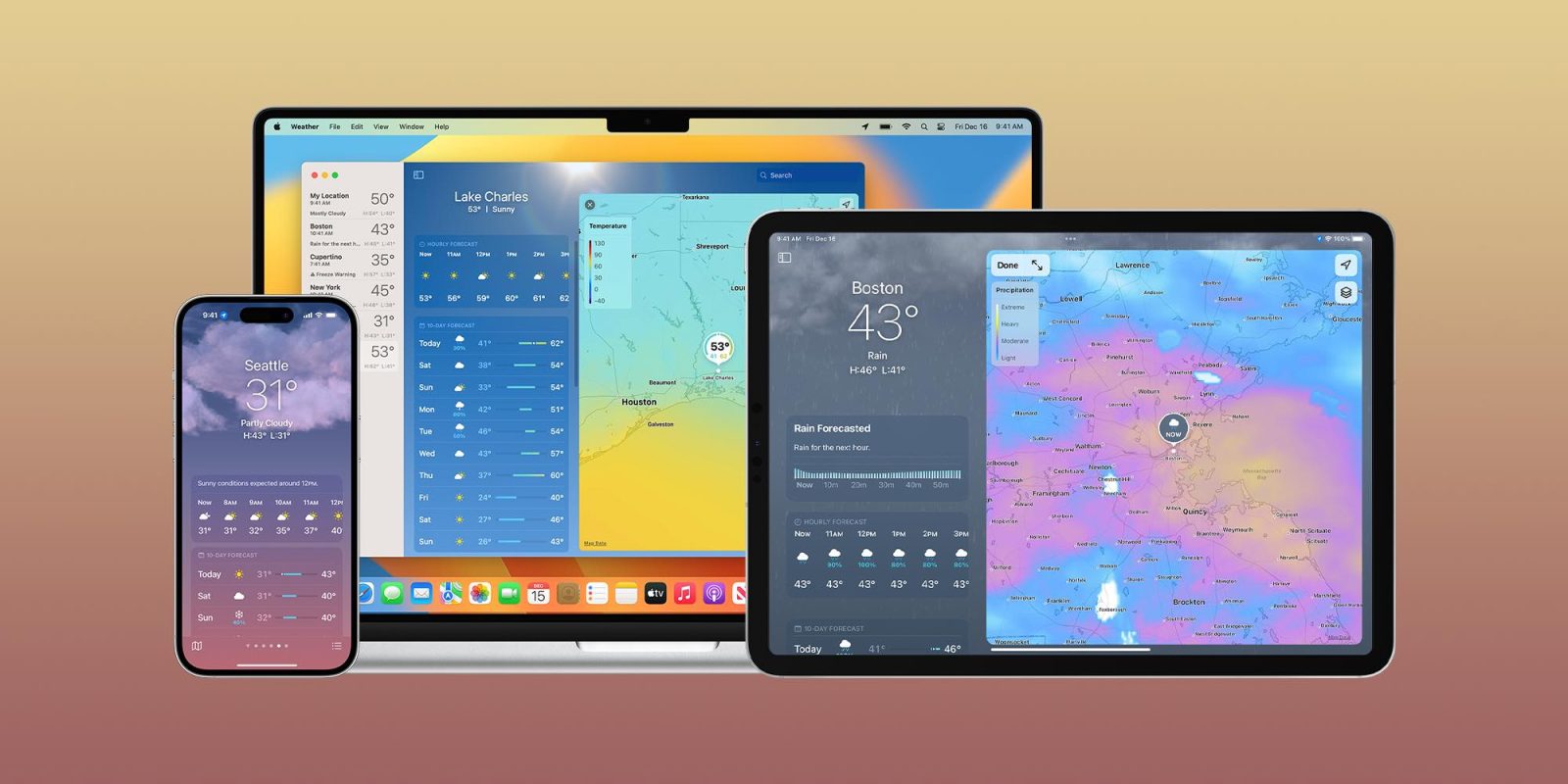
I’m always surprised when I see people using weather apps packed with ads. The Apple Weather app has gone from good to great over the last decade.
It remains the best free weather app that has no chance of being acquired and turned off. Sure, Apple acquired and turned off Dark Sky, but precipitation alerts live on in Apple Weather.
But here’s the but. Even I have to admit that Apple Weather has had some weird misfires lately. For me, they’re usually around rain notifications over the last two months.
When Chance and I were in Cupertino recently, we both remarked about being notified that rain was starting and stopping without ever seeing a drop. Weather is the kind of thing we expected to be hyper-accurate in Apple’s backyard.
This was at least reassuring that precipitation alerts weren’t just wonky in my neck of the woods.
Since returning home, Chance and I have continued to trade jokes about the weather forecast and the weather reality in different states. It’s getting to the point that rain notifications feel more like opinions than facts.
Frankly, I’m not sure this is a unique problem to Apple Weather, and the accuracy of Dark Sky precipitation alerts was often hit or miss, depending on where you lived.
Top comment by Tech_Enthusiast
It really is baffling to me how it has gone so wrong so quickly. I was a huge fan of Dark Sky and was always impressed by its accuracy in regard to precipitation—that’s what it was most known for. Apple Weather in iOS 16 has been wildly inaccurate with forecasts for my location in the U.S.
In South Florida, where rain is just an indicator that lunch time just passed, Dark Sky felt like a crystal ball for me in 2012. Torrential rainfall with a pause in nine minutes? Best to stay inside Publix for a few more minutes.
Weather forecasting is a tough business. That’s why meteorologists aren’t graded on their track record. There’s also this piece of information from the National Weather Service:
To summarize, the probability of precipitation is simply a statistical probability of [0.01 inch] of more of precipitation at a given area in the given forecast area in the time period specified. Using a 40% probability of rain as an example, it does not mean (1) that 40% of the area will be covered by precipitation at given time in the given forecast area or (2) that you will be seeing precipitation 40% of the time in the given forecast area for the given forecast time period.
Let‘s look at an example of what the probability does mean. If a forecast for a given county says that there is a 40% chance of rain this afternoon, then there is a 40% chance of rain at any point in the county from noon to 6 p.m. local time.
I feel like I was way too old when I first learned this. At any rate, it’s your turn to rate Apple Weather. How has the data been for you lately? Choose between 1-5 (1 being the worst and 5 being the best), and explain your answer in the comments.
Unable to see our poll? Content blockers (and our app) don’t play nice with polls. Whitelist 9to5Mac (and/or open the article in a browser) to participate and see results.
More on Apple Weather
- iPadOS 15: Hands-on with Apple’s Weather app for iPad (not real time)
- WWDC 2022: iPadOS 16 finally brings the Weather app to the iPad (for real this time)
- Here’s how to use the new Weather app for iPad on iPadOS 16
- macOS Ventura: Apple brings Weather app to the Mac
- Dark Sky shutting down for good next January
- Apple News integration appears in Weather app on iOS 16.2 beta with relevant regional stories
- Apple Weather app is down again, company acknowledges outage
FTC: We use income earning auto affiliate links. More.




Comments